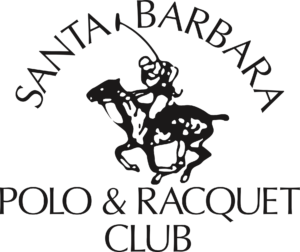Have you seen a trademark used by a franchise and then seen another party using the same trademark elsewhere? Why do identical or similar trademarks exist in the marketplace?
Well, it could be honest concurrent use (where both parties have been using their identical or substantially similar trademarks for a period of time and building goodwill upon their own trademarks) or it could be case of infringement or passing off (where the other party has no right to use an identical or similar trademark) or it could be use of a common word that is available to others to use (meaning no one party can monopolize the word).
Let’s look at the “Polo” trademarks which are used by many parties in Malaysia and Singapore.

“Polo” shirts have existed since the 19th century and are frequently associated with polo, which is still sometimes considered a sport for the elite. The sport gained popularity amongst the British Army and British tea planters in India and was brought into England in 1862. As the sport spread, so did the popularity of the polo shirts (also used in tennis then),which evolved from long sleeved button-down attire worn by the players into what it is today, a casual soft collared shirt.
Lacoste and Ralph Lauren were two brands that popularized the shirts, both having the foresight to capitalise on the growing demand of the polo shirts by expanding their clothing line to include different varieties of the shirt. Ralph Lauren went one step further to include the word “Polo” which is arguablydescriptive as part of its trademark:
Now, how does one claim exclusive rights to both the word “Polo” and the device of a player on a horse? Likely through extensive use of the brand in the marketplace, rendering acquired distinctiveness in the mark. Having said that, it may surprise you to know that the mark “Polo” is not owned by Ralph Lauren in some countries. In fact, in South Africa, the Polo trademark and the image of the player on a horse is owned by another party, unrelated to Ralph Lauren. Also, the United States Polo Association (USPA) has had a few “encounters” in the US with Ralph Lauren on the use of the word “Polo” and the use of the image of the player on a horse. These encounters resulted in a Settlement Agreement between the parties in 2003.
Curiously, despite the Settlement Agreement, Ralph Lauren recently initiated an opposition proceeding in Singapore against the application of the mark “![]() ” for eyewear products (Class 9).
” for eyewear products (Class 9).
Ralph Lauren relied on their earlier registered trademark “![]() ” in Singapore, registered for the same type of products and claimed that USPA made the application for their mark in bad faith as the application is prohibited by the Settlement Agreement.
” in Singapore, registered for the same type of products and claimed that USPA made the application for their mark in bad faith as the application is prohibited by the Settlement Agreement.
The Settlement Agreement was not adduced as evidence due to confidentiality clauses within the agreement. However it was claimed by Ralph Lauren that the Settlement Agreement regulates the manner of use of the USPA trademarks by USPA and restricts the use of their marks to products in Class 14, Class 18, Class 25 and Class 28 only. Use of the USPA marks in Class 9 (for eyewear) is prohibited.
USPA, in their defence, argued that Ralph Lauren misinterpreted the Settlement Agreement and that the terms of the agreement govern the manner of use of the USPA mark in Classes 14 (watches only), 18, 25 and 28 (solely goods related to the sport of polo) only. It does not restrict the use of their mark in other classes. USPA adduced evidence of its trademark registrations in other classes in Singapore (Class 3) and Hong Kong (Classes 9, 16, 24 and 34). Ralph Lauren argued that the registration in Singapore was pre-Settlement Agreement and as for the registrations in Hong Kong which were post-Settlement Agreement, Ralph Lauren reserved their rights to take action.
The Registrar rejected the bad faith argument because Ralph Lauren was unable to prove with evidence that USPA had used the mark in bad faith. The Registrar concluded that the element of bad faith could not be establishedas it was merely based on inferences.
On the ground that the marks are confusingly similar, the Registrar concluded that it is undeniable that there are some similarities between the marks but taking the marks as a whole (Ralph Lauren’s single polo player mark versus the USPA’s double player polo mark with the text “USPA”), there is a very low degree of similarity.
Both parties, going all out in this opposition, also argued on the pricing of their products. Ralph Lauren strongly argued that USPA’s eyewear is not expensive and they are ordinary and common products available at optical shops frequented by the general public who would not pay greater care and attention when buying them. Ralph Lauren emphasized that USPA’s mark, a device of double horsemen, would be unclear on the frames of the eyewear and they would be very similar to the single polo player mark.
The Registrar clarified that the issue of pricing is not relevant to the products sold by the parties. What is important in determining the purchase of eyewearis the common practice of a consumer, that being the consideration and attention given when buying eyewear. The consumer will normally closely inspect the eyewear that they intend to buy, to determine whether the spectacle frame fits well and is comfortable to use. By doing so, the consumer will be able to recognize the mark present on the eyewear and be capable of differentiating it from other brands. The Registrar firmly decided that there was no confusion between the marks.
This opposition in Singapore thus failed and USPA’s “ ![]() ” mark galloped closer towards registration. What was cemented in this opposition is the fact that bad faith allegations are not to be taken lightly – one should only bring forth allegations of bad faith if they have solid evidence to prove it. In this case, Ralph Lauren had a long shot as the only evidence they had was the Settlement Agreement which itself was in a cloud of secrecy.
” mark galloped closer towards registration. What was cemented in this opposition is the fact that bad faith allegations are not to be taken lightly – one should only bring forth allegations of bad faith if they have solid evidence to prove it. In this case, Ralph Lauren had a long shot as the only evidence they had was the Settlement Agreement which itself was in a cloud of secrecy.
Another Polo dispute was battled out in Malaysia in the recent case of BRG Brilliant Rubber Goods (M) Sdn. Bhd. (“the Plaintiff”) v Santa Barbara Polo & Racquet Club Management Inc. (“the Defendant”). This case highlights the fact that when a mark is a fragment of a name and emblem that has existed for a long time, it is without a doubt that the proprietor of the mark is the bona fide proprietor under trademark law.
To set the scene, the Plaintiff is the owner of the registered trademark “POLO” since 1981 in Malaysia, while the Defendant is the management company of the Santa Barbara Polo & Racquet Club, established since 1911. The Defendant’s mark has been used as a brand in the US since 1970, and was registered as a trademark in Malaysia in 1993.
The Plaintiff’s mark
The Defendant’s mark
The Plaintiff opposed the applications for the Defendant’s mark at the IP office and when it failed, it initiated these appeals at the High Court to challenge the decision of the Trademark Registrar to allow the marks to co-exist.
In the High Court, the Plaintiff submitted that the Defendant failed to substantiate its claim to proprietorship and that the use of the Defendant’s mark in other jurisdictions around the world is irrelevant to the proceedings. The Plaintiff made reference to the case of Walton International Limited v Yong Teng Hin; Pendaftar Cap Dagangan, Malaysia (Interested Party), where the Court stated that “a man cannot be said to have adopted a name or a mark if someone else has done it before”. Nevertheless, the Court differentiated the cases, stating that in that case, both trademarks were identical while in the present case, the Defendant is not adopting the Plaintiff’s “POLO” trademark.
Additionally, the Registrar previously found that the two marks were not confusingly and/or deceptively similar. Added to the consideration that there is no visual, conceptual or phonetic similarity, the Court reminded the Plaintiff that it had not secured any registration for the word mark “Polo”, and only owns the mark represented by the word “Polo” inside a box. The Court asserted that it is not recommended to select elements or component features of a mark to compare it to another mark, while disregarding other components or elements.
This is how another polo game came to an end in the High Court of Malaysia. After an intensive match, the Plaintiff failed. The Plaintiff overestimated the protection given through the registration of its mark in Malaysia, and could not claim proprietorship of the word mark “Polo”. This case reiterates trite law in the trademark world – that being the strength of the protection of a mark depends on the strength of the mark. Descriptive words or words commonly used by the public receive a narrower protection than words that are distinctive.
Thus, when selecting a trademark or brand for your franchise, do brainstorm for a strong trademark, one that no one should have any reason to use but you!








